Materials for the manufacture of mobile devices

Over the past four years, the market has radically changed. The quality of the displays has greatly increased, the battery life has increased. With OEMs using very similar platforms, the choice of materials for their devices becomes more and more important. Almost all manufacturers have already faced the need to radically change the materials used: while the market is becoming richer, customers are less likely to change their mobile devices. And manufacturers have to invent various moves to stimulate demand. Often it comes down to a more thorough selection of materials for use in the exterior of the device.
However, such efforts are often wasted. Just many users care little about the material of the case, especially when using the cover. For example, there is a perception that aluminum is heavier, less reliable, impairs the quality of communication as compared to polycarbonate. Some cite heat too much during intensive work. At the same time, aluminum is more expensive, according to some manufacturers. And if you use glass, then it is clear to everyone that such a gadget will not suffer a fall. And then the question arises: why do manufacturers still use different impractical materials?
')
This can not be answered unequivocally. When choosing a material, it is necessary to take into account many different requirements. And there is no one, the best option. For most parts, the choice is limited to three materials: plastic, glass and metal.
Plastic
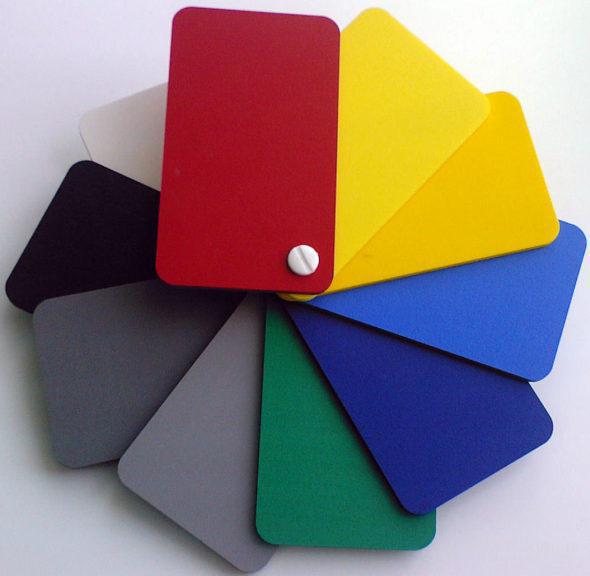
Among the huge variety of plastics, polycarbonate is the most commonly used when creating mobile devices. It is resistant to shocks, keeps heating relatively well and is incredibly flexible. Polycarbonate is practically not an obstacle to the spread of radio waves. And since the price competition in the mobile device market is increasing, the lower cost of polycarbonate compared to metals and glass will become an ever weightier advantage.
But there is a material and disadvantages. Polycarbonate has a low thermal conductivity, that is, in fact, it works as a thermal insulator. And this leads to a decrease in the clock speeds of the central and graphic processors in order to prevent their overheating. At the same time, metal cases (aluminum and magnesium) perfectly conduct heat and act as a radiator. A similar situation is observed when comparing polycarbonate with glass. For comparison, the thermal conductivity of aluminum is 205 Watts / m * K, magnesium is 156, single-layer glass is 0.8, and for polycarbonate it is 0.22. In other words, other things being equal, devices in polycarbonate cases have to be made slower compared to their counterparts in metal and glass cases.
But that's not all. I mentioned the high flexibility of polycarbonate. And this becomes a big disadvantage for smartphones that are trying to make as thin and compact as possible. Metal and glass provide much greater mechanical bending stiffness. Indeed, in smartphones, even the back cover performs various functions: in particular, an antenna is often attached to it, in order to provide support for various communication standards. The cover bent from loads can affect the rather fragile contacts of the antenna, which are often very small. Up to a certain limit, they will survive, but then the contact will simply be broken. An example of this is the modification of the Tegra 3 of the HTC One X smartphone. It was followed by a defect: Wi-Fi and Bluetooth were often lost due to the destruction of antenna contacts. To solve the problem, the manufacturer had to additionally strengthen the cover so that it did not twist from external loads.
Metal
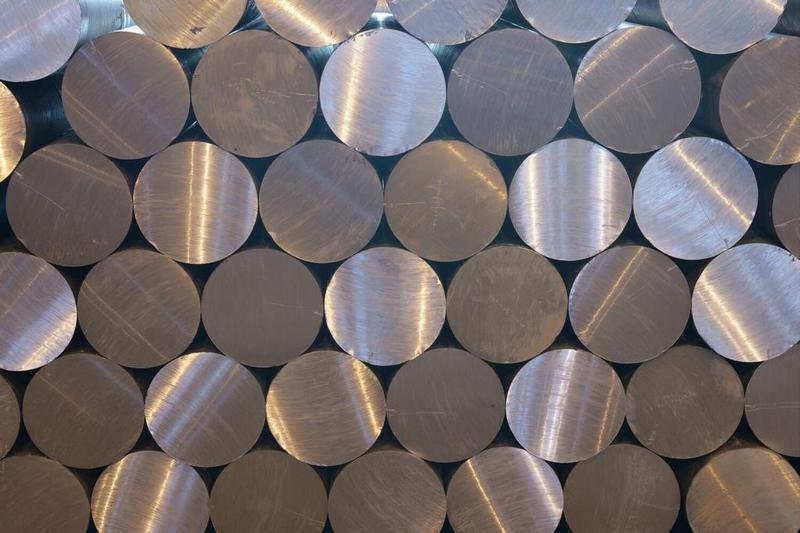
Many people praise metal as a super material for mobile phone cases. However, often people are limited to appearance and tactile sensations. Of course, in relation to the topic under discussion, we are talking about aluminum. Magnesium is also often used, but usually for the manufacture of the frame.
Aluminum alloys have their advantages. First of all, it is high stiffness. Due to this, the insides of gadgets are protected in case of impact better than in a polycarbonate case. However, with an all-aluminum package, it is better to make an external antenna in order to improve the signal characteristics.
Aluminum alloys are also more resistant to scratching than polycarbonate. But aluminum is rarely used in gadgets without anodizing. It is of three types, and only one of them has a high resistance to damage. In other cases, anodized coating can not boast the same and quickly covered with scratches. Also one of the most important advantages of aluminum is high thermal conductivity, which allows not save on clock frequencies.
But like any other material, aluminum is not ideal for making mobile devices. When abandoning an external antenna, it is necessary to make a plastic / glass radiotransparent "window". This means that the device will be less isotropic when it receives a signal. Even if a part of the aluminum case is turned into an external antenna, a person’s hand touching it will interfere. Moreover, in this case it is much more difficult to ensure compatibility with different frequencies.
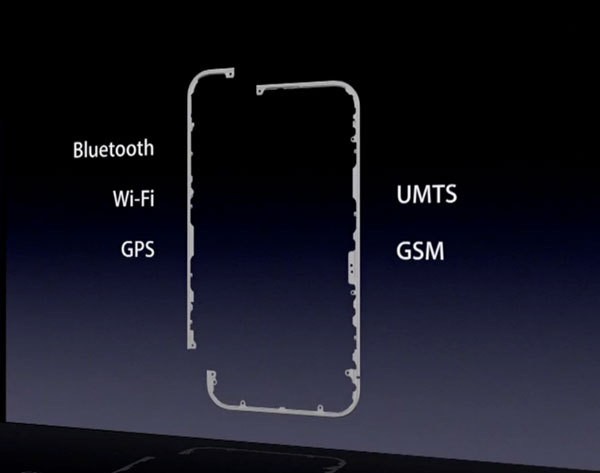
If you use several different antennas and tuners for the sake of creating a completely metal body, there remains such a disadvantage as a noticeable difference in signal reception. And this difference depends on the current frequency.
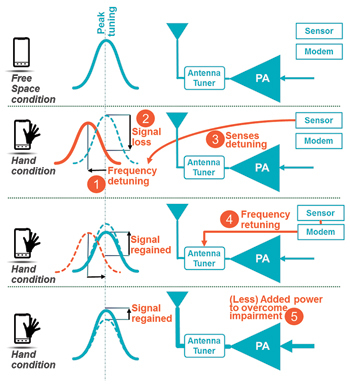
In addition to problems with the signal, aluminum is less resistant to plastic deformations. And although the insides are better protected, but the appearance quickly deteriorates due to small dents. But polycarbonate with great chances survive a fall without damage. Aluminum is also much more expensive, and it also requires more time and energy for processing, which results in a decent share in the price of the finished product. Finally, the excellent thermal conductivity of aluminum results in a device that is too hot at high computational loads. Also in the cold to keep the polycarbonate case in hand much nicer than aluminum.
Magnesium is much lighter than aluminum due to its lower density. At the same time, magnesium has less effect on radio signal transmission, having a number of advantages of aluminum compared with glass and polycarbonate: high thermal conductivity, relatively high hardness and somewhat better scratch resistance. By all accounts, magnesium is better than aluminum.
However, from the supply of magnesium cases to the conveyor, the increased flammability of magnesium in the oxygen environment keeps us, which is why casting has to be carried out in vacuum chambers. Moreover, without surface treatment, magnesium quickly corrodes, which makes it not the best choice in the manufacture of the case, although it is often used to create the frame of the product.
Glass

This is the hardest and scratch-resistant of all three materials considered by us. But the most fragile, prone to the formation of fragments. Therefore, glass transfers only plastic deformation. Aluminosilicate glass, better known under the brand name Gorilla Glass, is most commonly used to make cases. On thermal conductivity, it is between aluminum and polycarbonate. Glass distorts the radio signal a little, which allows the use of an internal antenna. However, the main drawback - the fragility and insecurity for humans in the event of destruction. In addition, glass imposes large restrictions on the possible shape of the case. Therefore, such devices are usually small in size, and the proportion of glass in the total volume of the material of the body trying to make smaller.
Conclusion
Of course, engineers are trying to circumvent the inherent flaws of all the materials reviewed. In the case of polycarbonate enclosures, a magnesium frame is used, which removes heat to the glass display, which acts as a radiator. Wall thickness and different types of plastic, metal and glass can significantly alleviate their inherent flaws. For example, adding ABS plastic to polycarbonate significantly increases the hardness of the material. A splinter film on glass reduces the risk of injury to a person if broken. And advances in antenna construction negate the shielding effect of any metal.
But the question still remains - why is the choice of this or that material so important? The answer lies in industrial design. We constantly touch smartphones and tablets, hold them in our hands. Most of the time we look at the display, but at the same time we constantly have tactile contact with the device. And the way it looks, what it feels like, what form it is, all this is very important. It is always better when the device fits well in the hand, pleasantly to the touch, beautiful. Unnecessary elements spoil the look. Good design is obvious and invisible. Only when we are faced with a bad design, we begin to notice a good one. Technologies can smooth out material deficiencies, but nothing will fix a bad design.
The second reason why a lot of attention is paid to the choice of materials is important for mobile devices such as weight and dimensions. For example, polycarbonate shells often have to do with thicker walls to provide the necessary rigidity of the structure.
So far, all this sounds subjective, but when the market reaches the saturation point, the choice of materials and industrial design will become crucial factors. However, they have become.
However, the situation may change in connection with the development of new materials and technologies. In particular, industrial three-dimensional printing can help in the creation of new hull designs. Imagine a smartphone with very thin walls, lightweight, but at the same time as if made of steel. This is quite possible in the future using 3D printing from composite materials. For example, in the form of honeycomb panels of resins with very high mechanical stiffness:
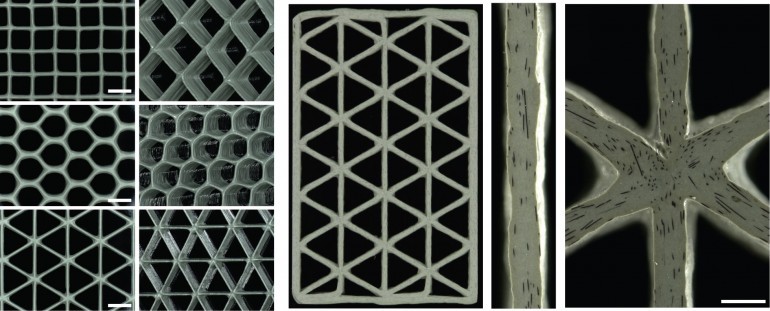
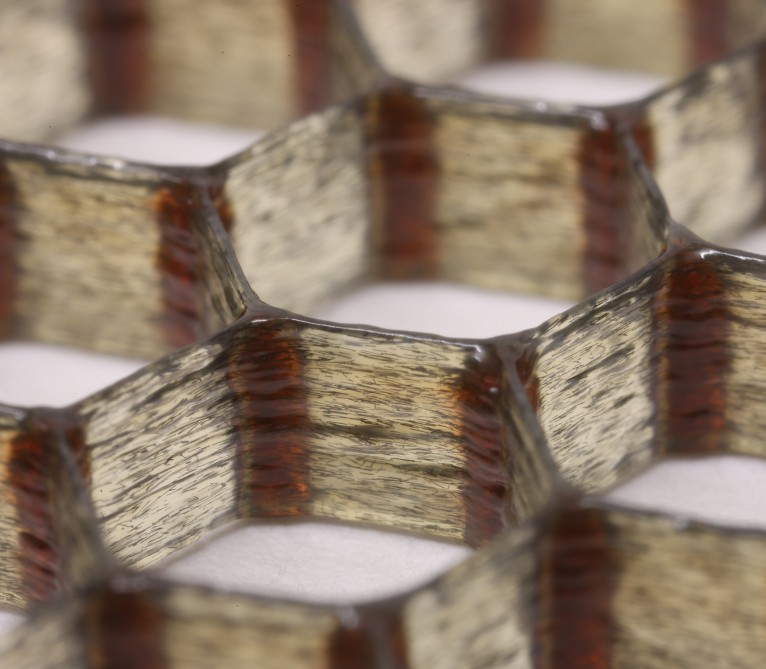
This principle applies to the creation of intercontinental and space rockets, in which a very thin outer shell plays the role of a supporting structure, the frame.
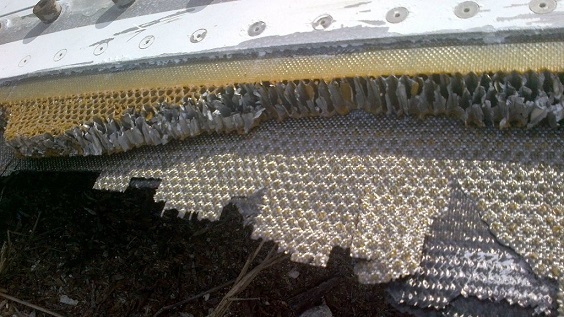
Further miniaturization will require the creation of flexible gadgets. In particular, manufacturers have been experimenting with the manufacture of such displays for several years. As a protective glass and material for the body can be used very thin flexible glass, for example, Willow Glass. It was developed by Corning, manufacturer of Gorilla Glass.
Graphene is another material candidate for gadget cases. However, this is such a special material, which everyone talks about, which millions of applications find, describe its wonderful properties, but this usually ends there. It is not known whether it will be possible to start industrial production of products from graphene at an affordable price. So far, all its magnificence does not go beyond the laboratories.
You can also mention a material called Liquidmetal. It has a unique amorphous structure, so it is also called "metal glass". By its strength and elasticity, it is comparable to titanium, resistant to corrosion. It can be given a complex shape without degrading the strength characteristics. Therefore, many predict it for the role of "material of the future" for the manufacture of gadgets.
Source: https://habr.com/ru/post/229801/
All Articles